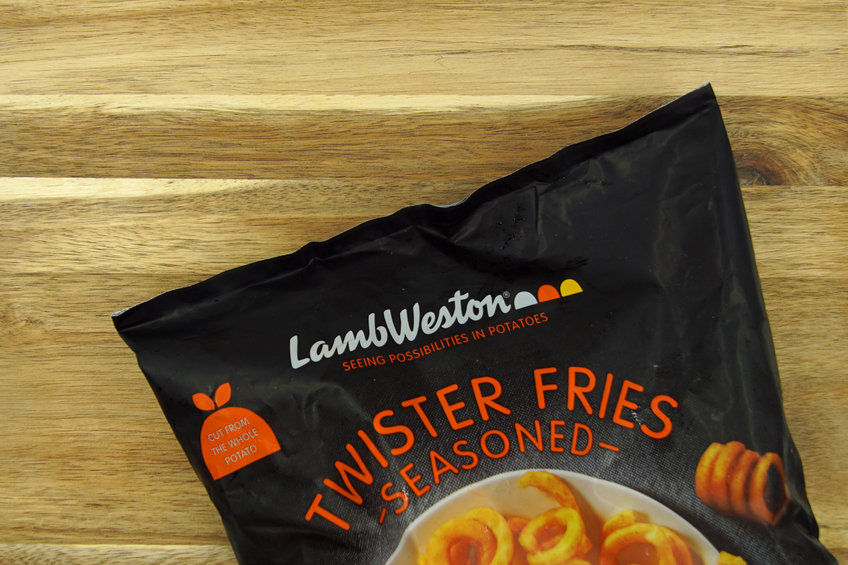On October 7, analysts at JPMorgan downgraded Lamb Weston Holdings Inc (NYSE: LW) to Neutral from Overweight, while raising the price target slightly to $68 from $63.
This adjustment implies negligible potential upside from the stock’s current trading price, reflecting concerns over limited visibility into the company’s near-term performance.
JPMorgan outlined three primary issues affecting Lamb Weston’s fundamentals.
First, there is sluggish restaurant demand in both Europe and the U.S., particularly in quick-service restaurants (QSRs), which has led to softer sales volumes.
Second, the demand for frozen potato products has become harder to predict, adding uncertainty to the company’s revenue forecasts.
Third, even if demand begins to recover, there’s no assurance it will grow at the same pace as the expanding global supply, potentially leading to oversupply and further pricing pressures.
The analysts expressed concern that the company’s efforts to stimulate growth through price investments have not yielded the expected volume improvements.
They noted that Lamb Weston’s business appears to be moving in an unfavorable direction, with increased spending on pricing strategies not translating into higher sales volumes as hoped in previous quarters.
Lamb Weston: operational challenges and cost-cutting measures
Facing rising costs and operational inefficiencies, Lamb Weston has announced significant restructuring actions.
The company plans to cut approximately 4% of its global workforce, close an older facility in Connell, Washington, and temporarily curtail certain production lines in North America.
These measures are expected to generate about $55 million in pre-tax cost savings and reduce capital expenditures by $100 million in fiscal 2025.
Despite these challenges, Lamb Weston reported better-than-expected first-quarter earnings.
Lamb Weston Q1 earnings reveal profit dip
The company posted non-GAAP earnings per share of $0.73, surpassing estimates by $0.01, and revenue of $1.65 billion, beating expectations by $100 million.
However, net sales still declined by 1% year-over-year, indicating underlying issues in market demand and operational efficiency.
In the first quarter of fiscal 2025, Lamb Weston’s income from operations fell by 34% to $212 million, and net income declined by 46% to $127 million.
Diluted earnings per share decreased by 45% to $0.88. Adjusted EBITDA also saw a 30% drop to $290 million.
The declines were attributed to higher manufacturing costs per pound, a $39 million loss from a voluntary product withdrawal, lower sales volumes, and increased warehouse costs.
The company reaffirmed its net sales target for fiscal 2025 at $6.6 billion to $6.8 billion but reduced its GAAP net income target to between $395 million and $445 million.
The diluted EPS target was also lowered to a range of $2.70 to $3.15. Lamb Weston is targeting the low end of its adjusted EBITDA range of $1.38 billion to $1.48 billion, reflecting a cautious outlook for the remainder of the fiscal year.
Lamb Weston: fundamental performance
Lamb Weston is contending with both internal and external challenges that have impacted its fundamental performance.
The company faced significant disruptions due to a problematic transition to a new enterprise resource planning (ERP) system, which adversely affected order fulfillment rates and customer relationships.
This operational hiccup resulted in reduced visibility into inventory levels and logistical inefficiencies.
Externally, the company is navigating a supply-demand imbalance in the frozen potato industry.
Soft restaurant traffic and decreased demand, particularly in the QSR segment, have led to excess capacity in North America and Europe.
Lamb Weston anticipates that this imbalance may persist through much of fiscal 2025, necessitating strategic adjustments to its operations and cost structure.
Lamb Weston stock valuation
Currently trading at a price-to-earnings ratio of approximately 12.4, Lamb Weston’s stock is significantly below its five-year average P/E ratio of 23.4.
The reduced valuation metrics indicate that the stock may be undervalued relative to its historical performance.
Some analysts view this as a potential opportunity for long-term investors, especially if the company can successfully navigate its operational challenges and capitalize on cost-saving measures.
Market sentiment is mixed, with six out of twelve brokerages rating the stock as a “buy” or higher, and the remaining six rating it as a “hold.”
The median price target stands at $68, aligning with JPMorgan’s revised target.
The stock has fallen over 36% year-to-date, reflecting investor concerns but also potentially offering a more attractive entry point.
Having assessed Lamb Weston’s current situation—from analyst downgrades and operational challenges to its financial performance and valuation—it becomes essential to consider how these factors might influence the stock’s future movement.
Analyzing the technical aspects could provide further insights into the potential trajectory of Lamb Weston’s share price in the coming months.
Short-term upward momentum, but weak on longer-term charts
Having made its all-time high at $117 last year, Lamb Weston has seen its stock crashing 36.5% so far this year making it look extremely weak on the long-term charts.
Source: TradingView
However, since making its low at $53 earlier this year in July it has bounced back considerably, displaying some strength on the short-term charts.
Hence, investors who are considering betting on a turnaround can initiate a small position at current levels with a stop loss of $52.5.
They can boost their position once the stock closes above its 100-day moving average.
Traders who continue to have a bearish outlook on the stock and want to initiate a fresh short position must ideally do so above $72 with a stop loss of $80.18.
If the stock loses its short-term upward momentum soon, it can fall back to levels below $55 where one can book profits.
The post JPMorgan downgrades Lamb Weston but raises PT to $68: should you hold or sell? appeared first on Invezz

